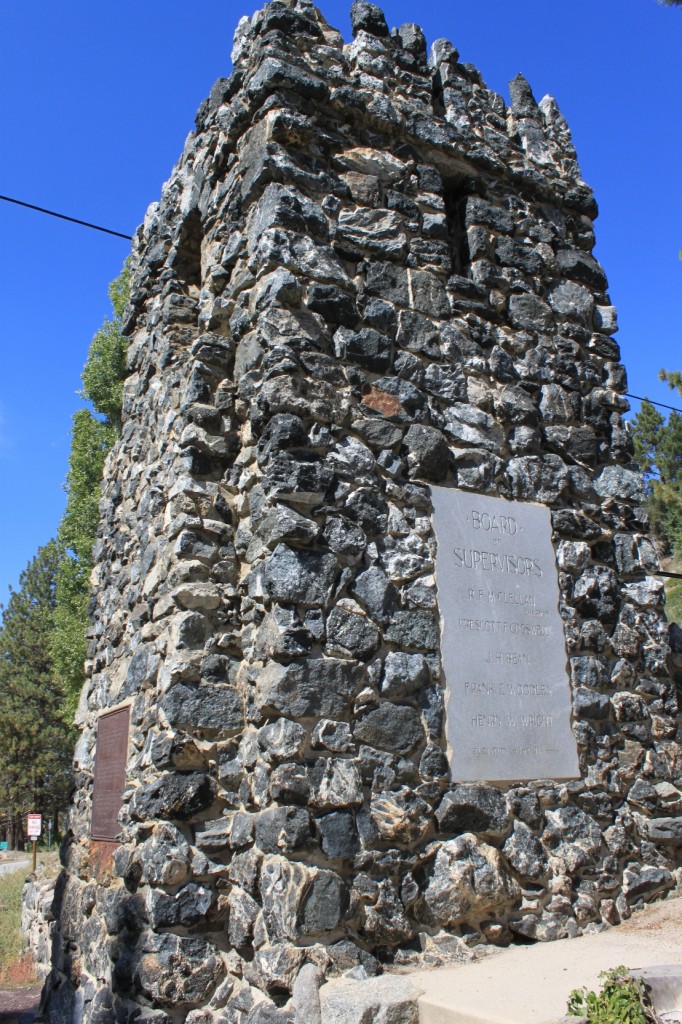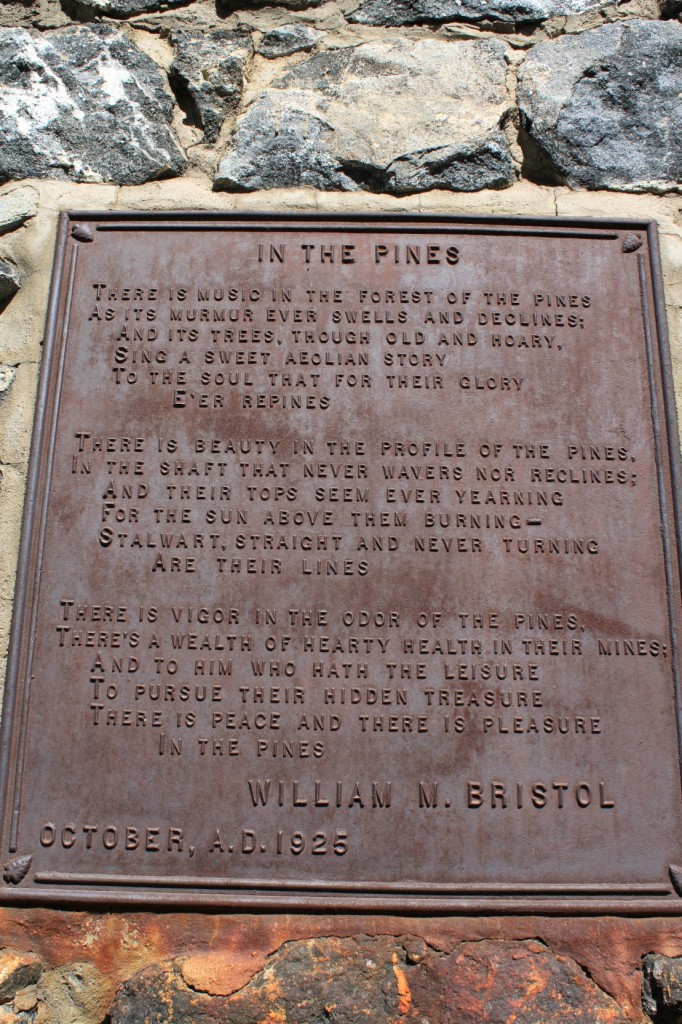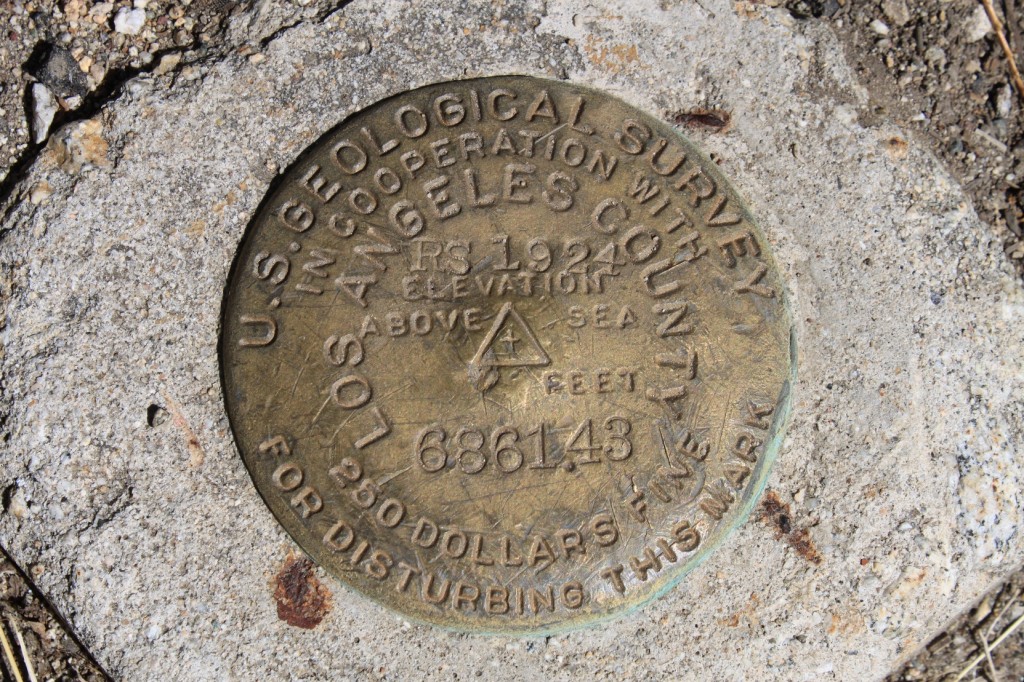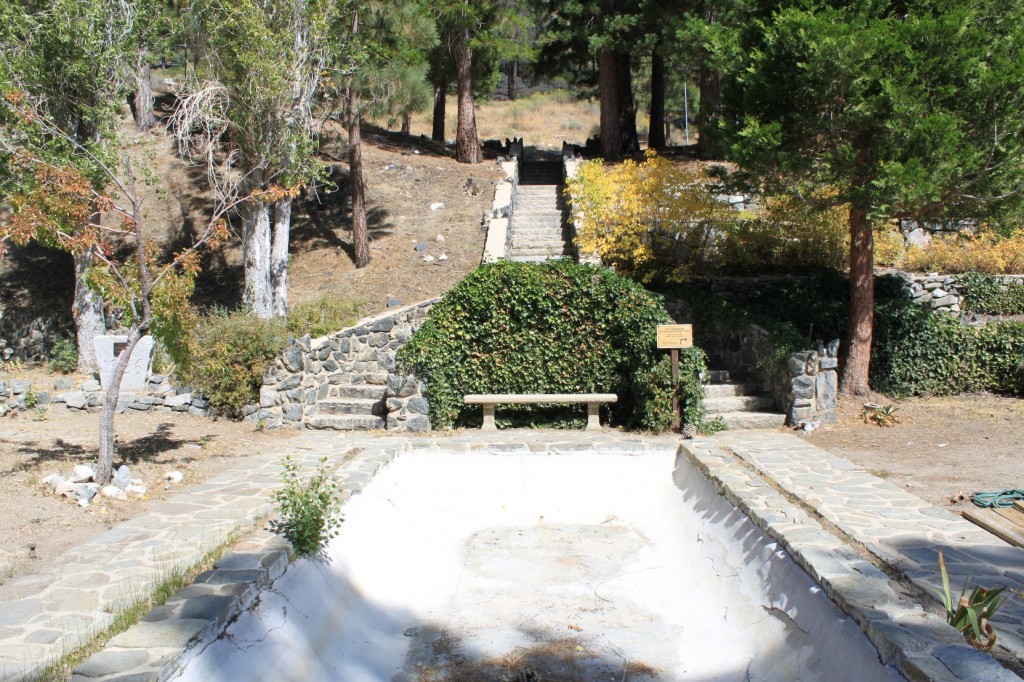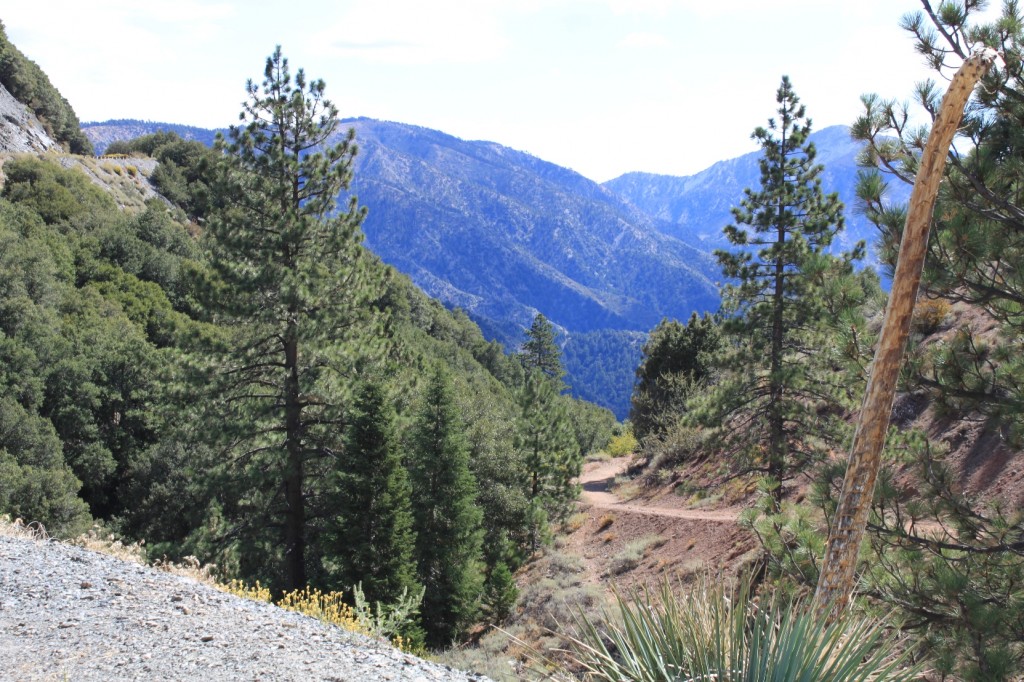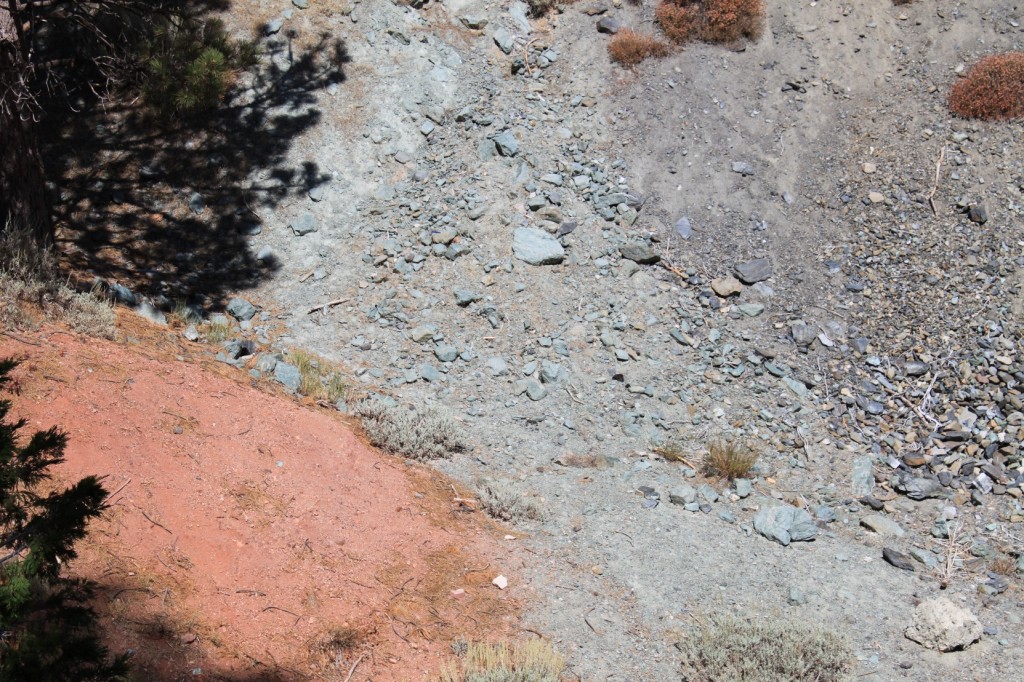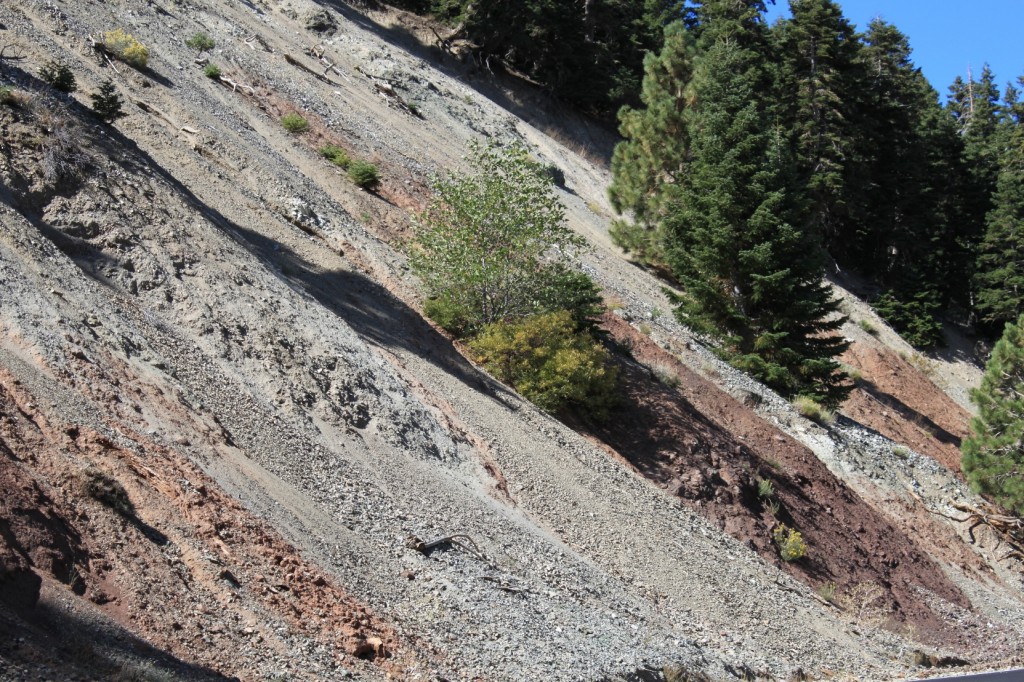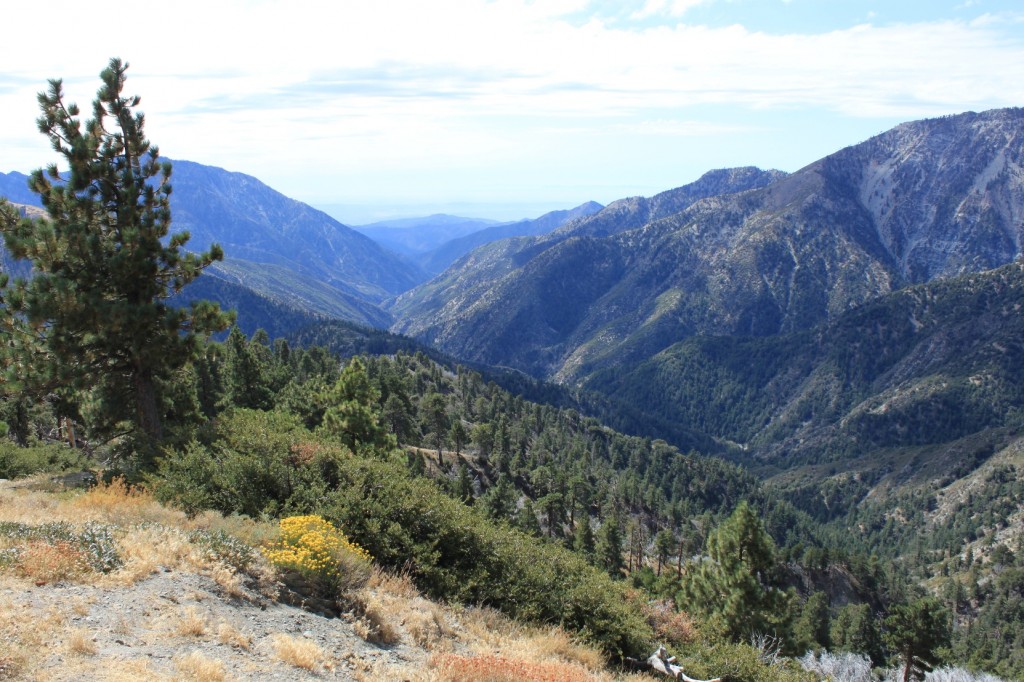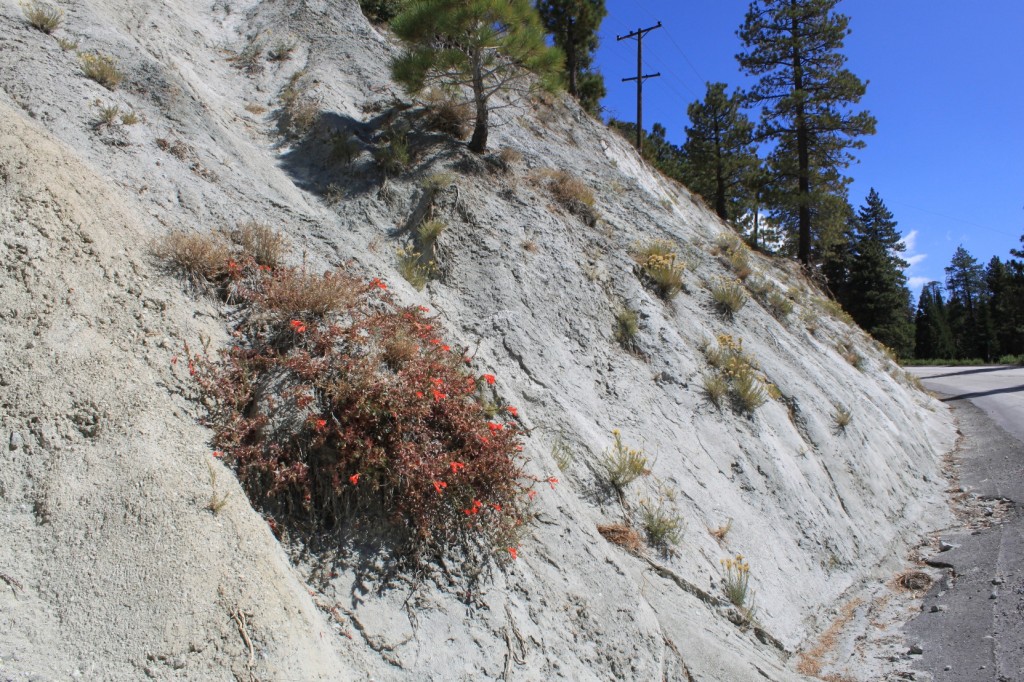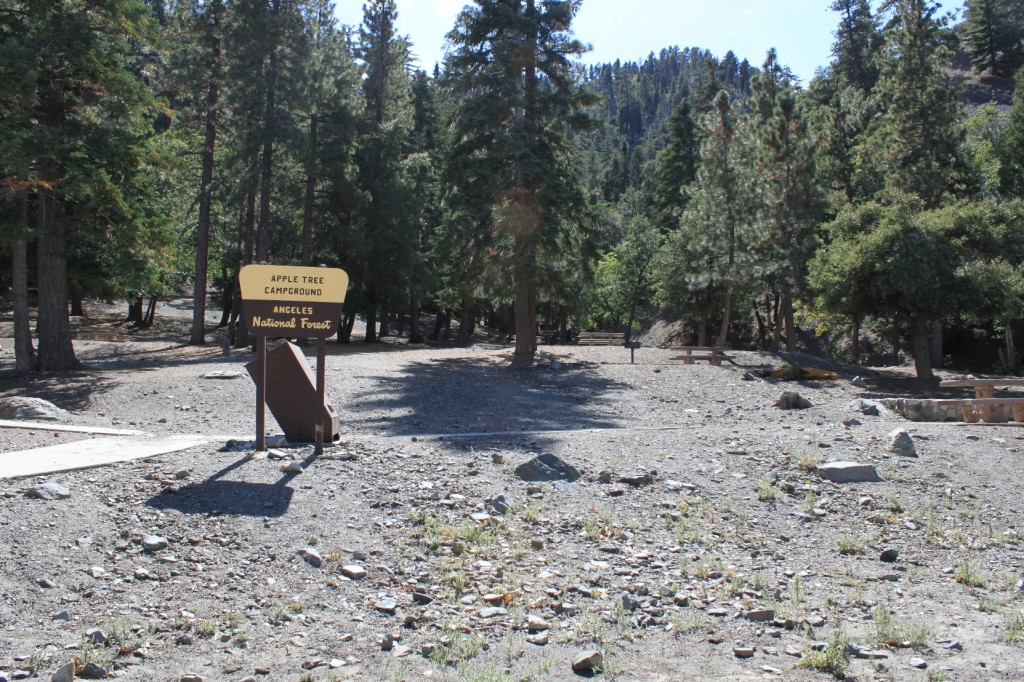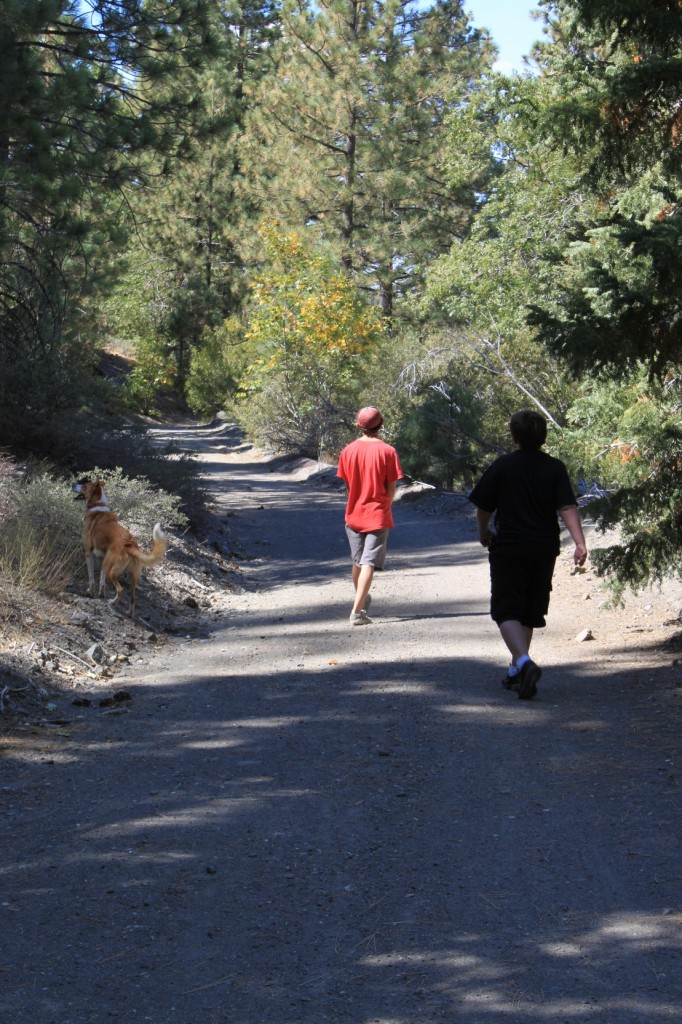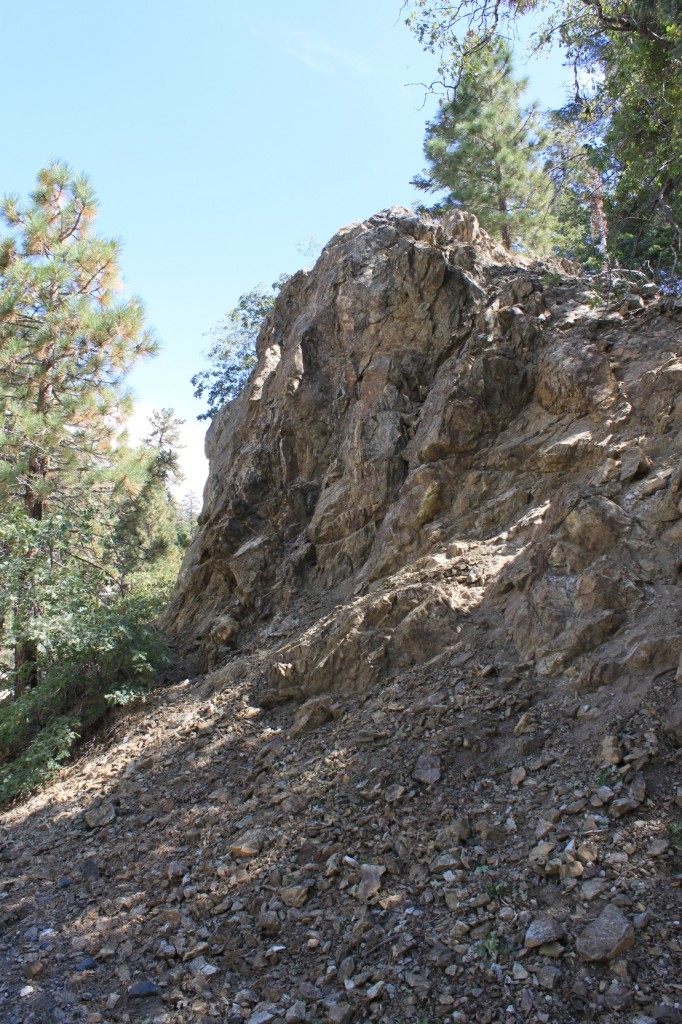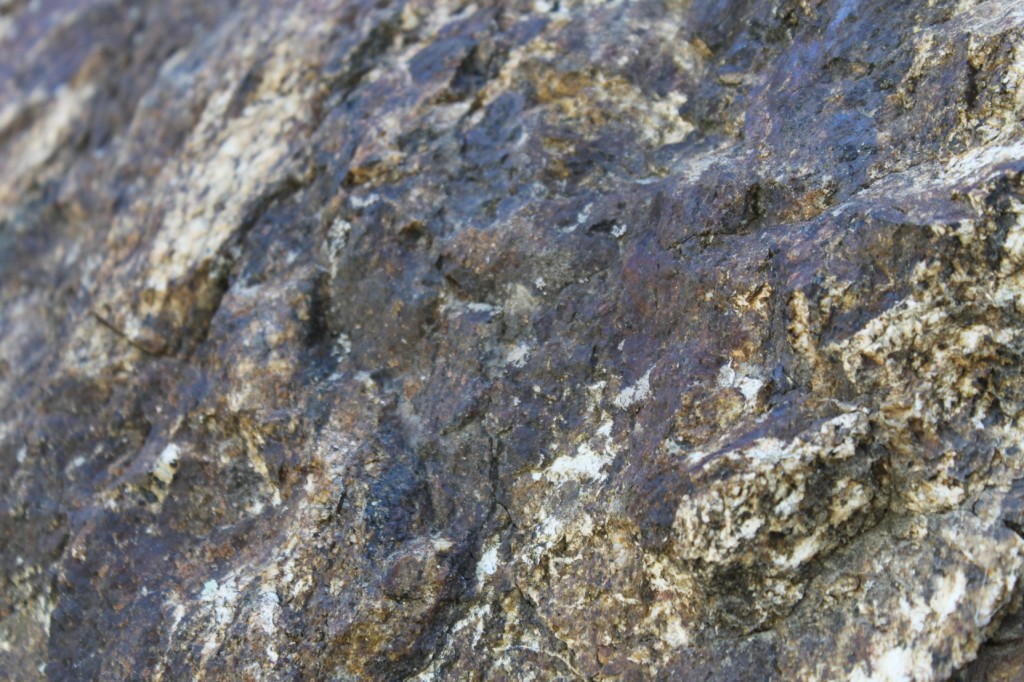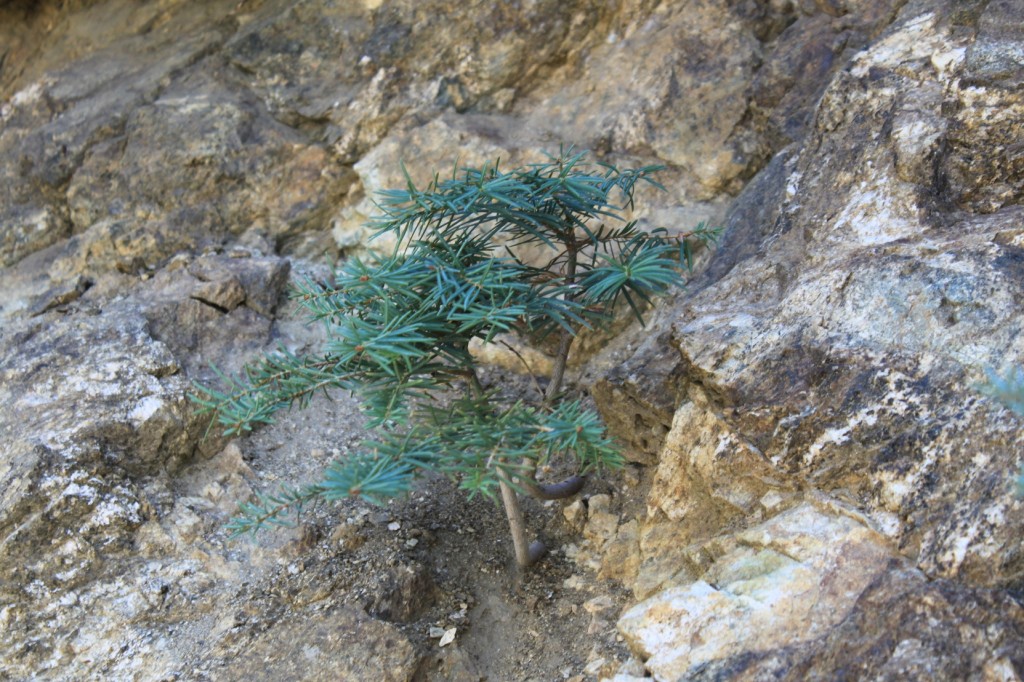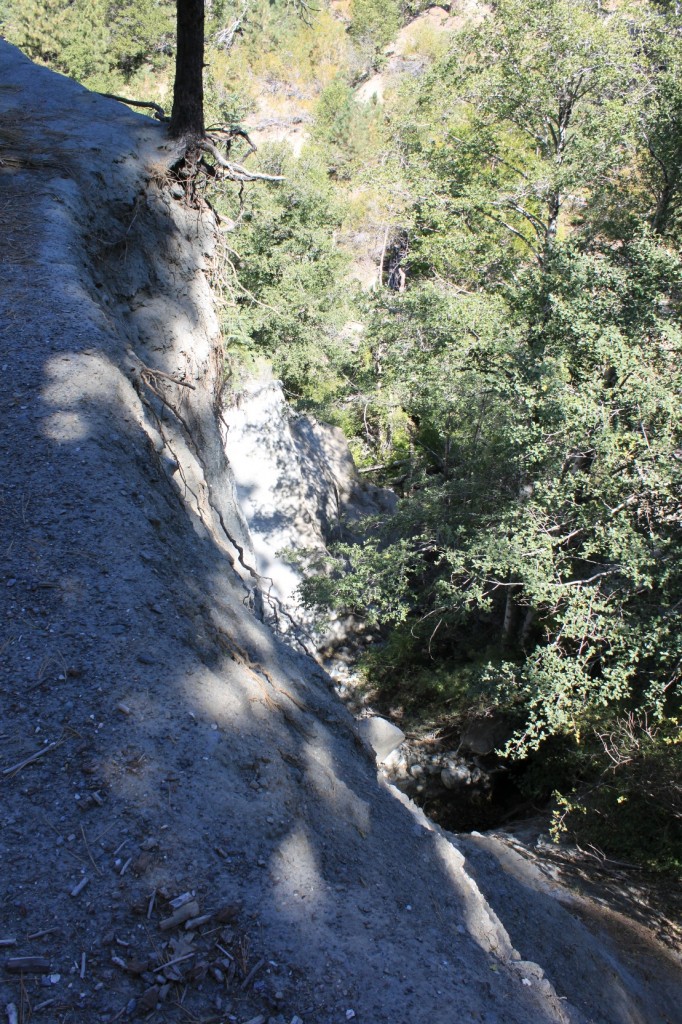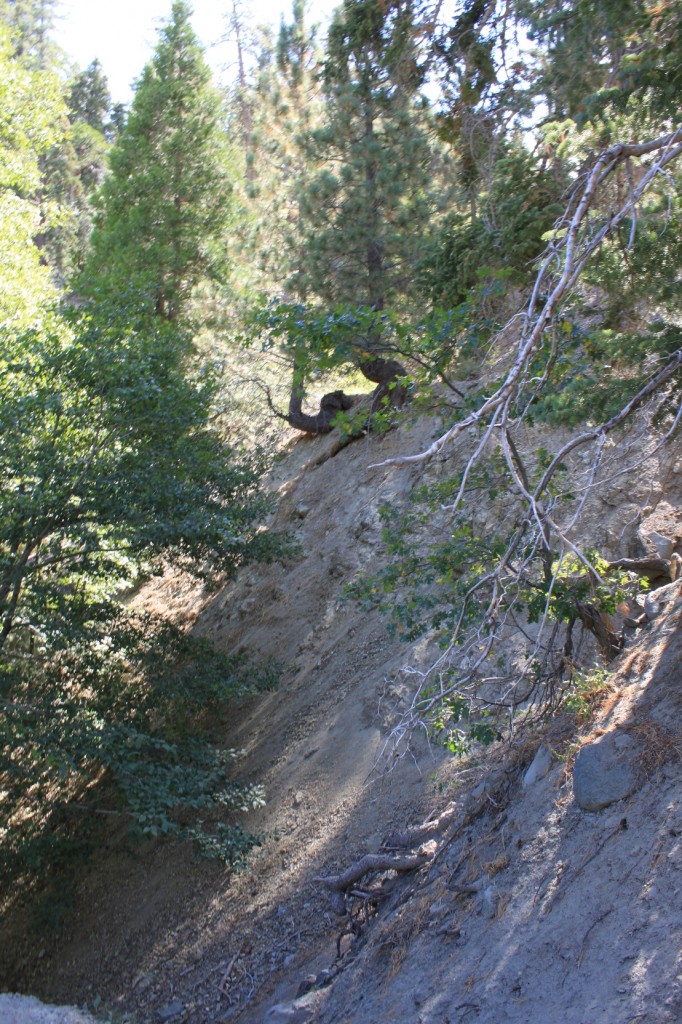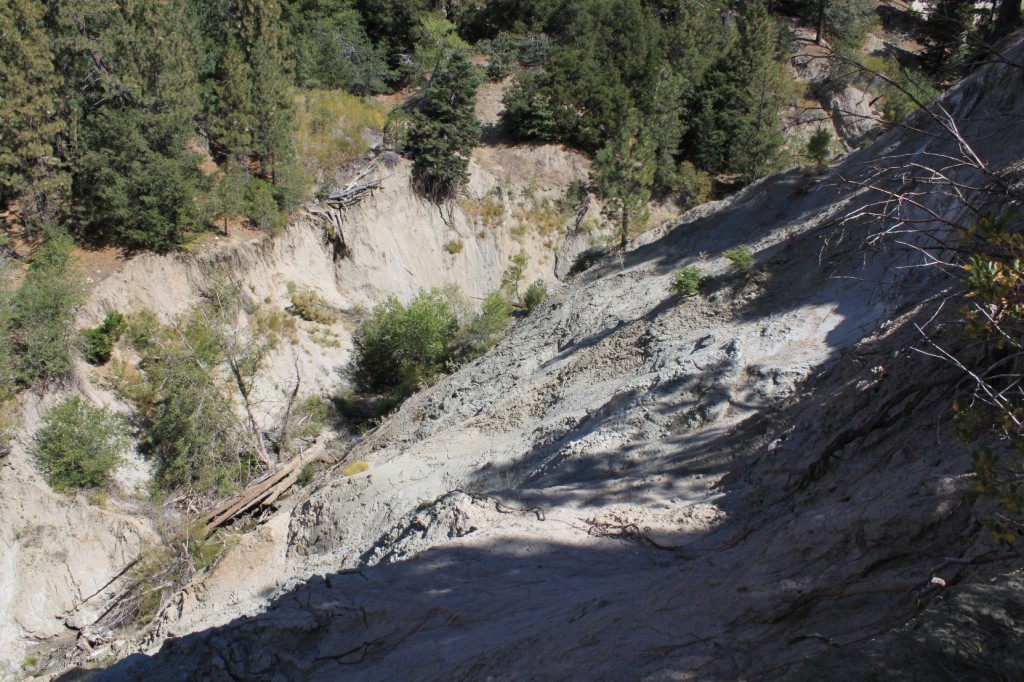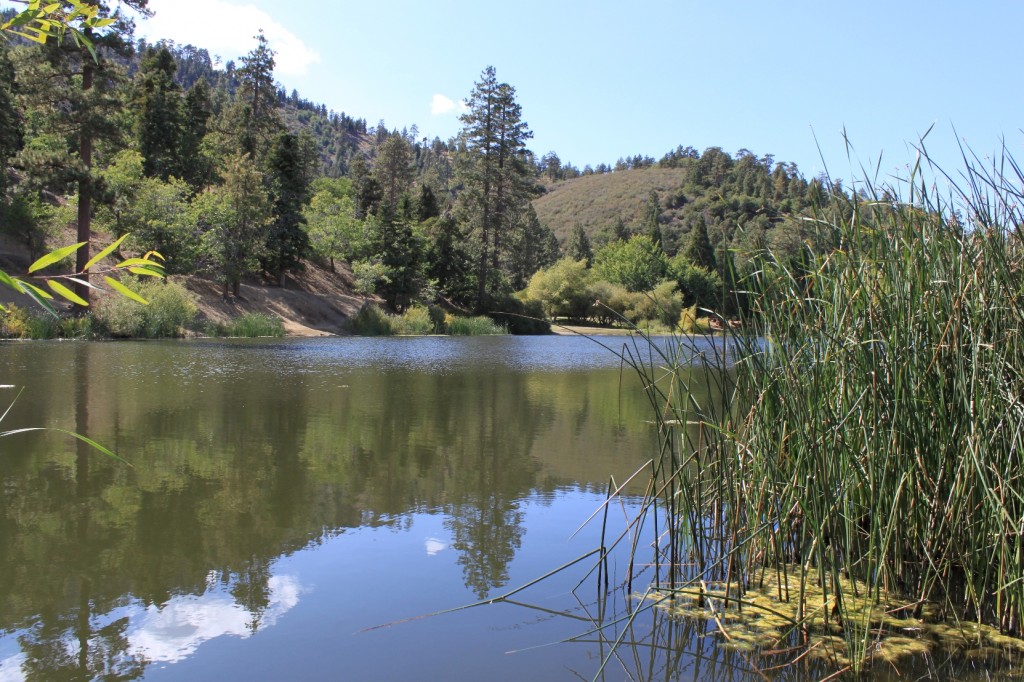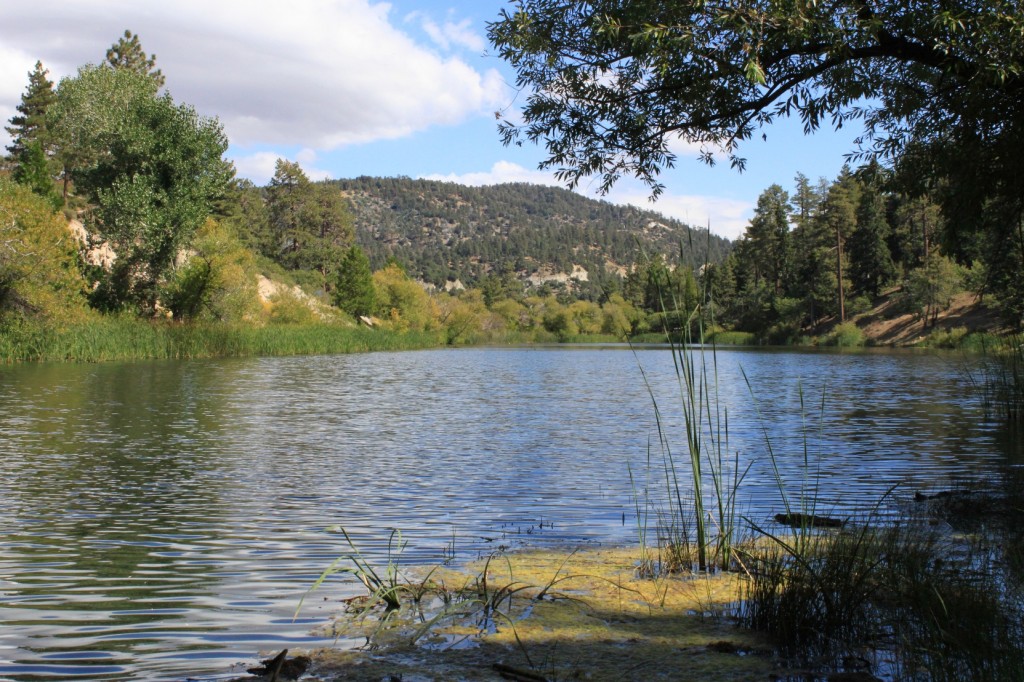Back in October, we took a short trip across the Angeles Crest Highway, stopping at the Mount Wilson Observatory along the way. The follwoing day, we spent some time exploring features of the San Andreas Fault around the Wrightwood area.
The former Big Pines Visitor Center (which appear to be forest offices now) sits at a geologically significant site. The center is located on the Big Pines Divide, which is a dip in the terrain created by the grinding action of the fault. This large rock tower marks the location of the highest elevation of the San Andreas Fault – 6862′.
There isn’t anything on the tower to acknowledge this; I know this fact because I am following a self-guided auto tour put together by the Big Pines Visitor Center. The plaque instead has a poem …
… and a USGS Benchmark (I am always thrilled when I find one of these, and I always take a picture … )
The Big Pines Visitor Center isn’t a visitor center anymore – at least not at the moment. The building houses offices at the time we visited, and was undergoing renovations. It seems to be a converted historic house; up the top of the stairs is an interpretive trail. (Also important to note: across the street are some public restrooms.)
Farther up the Angeles Crest Highway (traveling away from Wrightwood) is Vincent Gulch Divide or Vincent Gap. From the parking lot, you can look directly into the Punchbowl Fault Zone. (The Punchbowl Fault is part of the San Andreas Fault system.)
Vincent Gulch is located precisely on the San Andreas Fault. The fault line here is marked by the different colors of rock, indicating the different types of rocks on the two plates. The dull gray schists are the native rocks of the area; the red sedimentary rocks have been shifted many miles by the fault to where they are now.
You can also see the different colored rocks in the road cuts in the area.
Traveling back towards Wrightwood, the viewing area at Inspiration Point gives you another view of the Punchbowl Fault Zone. The auto tour says that from here, you can see the east fork of the San Gabriel River as it comes north and then splits into opposite directions as a result of the Punchbowl Fault, but I can’t see the river, at least not today. It’s fall, so it may be more visible from here at other times of the year.
Traveling back towards Wrightwood, we next turn onto Highway N4, the Big Pines Highway. The road cuts along the way are of a powdery substance called “fault flour” according to the tour paperwork. This is rock material that has been crushed by the action of the fault. It is very unstable and tends to slump when saturated with water.
Our next stop is at the Apple Tree Campground. It is a Monday in October, so for us the place is deserted.
A dirt road to the east (or off to the left as you face the campground) is about a half-mile long, and gives you a chance to view some of the features of the fault close up. It isn’t too steep and is well maintained since it is an access road for a small water tank.
The rock outcroppings along the way are evidence of the vertical uplifting of the fault.
Some of these outcroppings are coated with a red varnish called “slickenslide” that is a result of chemical changes brought on by the heat and pressure from fault movement.
This spunky little tree doesn’t seem to mind …
The end of the road here is quite literal: this road goes right up to a steep scarp that is probably the result of the 1857 earthquake.
This crushed rock is known as “fault gouge” which is severely crushed granite that has been reduced to a clay-like substance.
Continuing down the Big Pines Highway towards the Antelope Valley, we make our last stop of the day at Jackson Lake.
Jackson Lake is often referred to as a “sag pond” as the San Andreas Fault runs directly underneath. The lake’s water is supplied by underground springs, spring snowmelt and rainfall. My auto tour paperwork says this lake was formed in 1916 when a dam was built across Mescal Creek. However, the book, “Field Guide to the San Andreas Fault”, says Jackson Lake is an enclosed basin created when a ridge was shifted into position, blocking the creek. The book notes that only 50 feet away is a deep gully lying well below the lake’s level and one day soon (geologically speaking), the lake will overflow and erode a channel to the gully, thereby draining the lake.
Well, whether it’s a sag pond or just a geologic quirk in time, right now it’s a beautiful little park and picnic area which is stocked with fish in the spring and summer. There is also a campground closeby.
For more on Jackson Lake, click here or click here.
Here’s the map:
View Features of the San Andreas Fault around Wrightwood in a larger map
